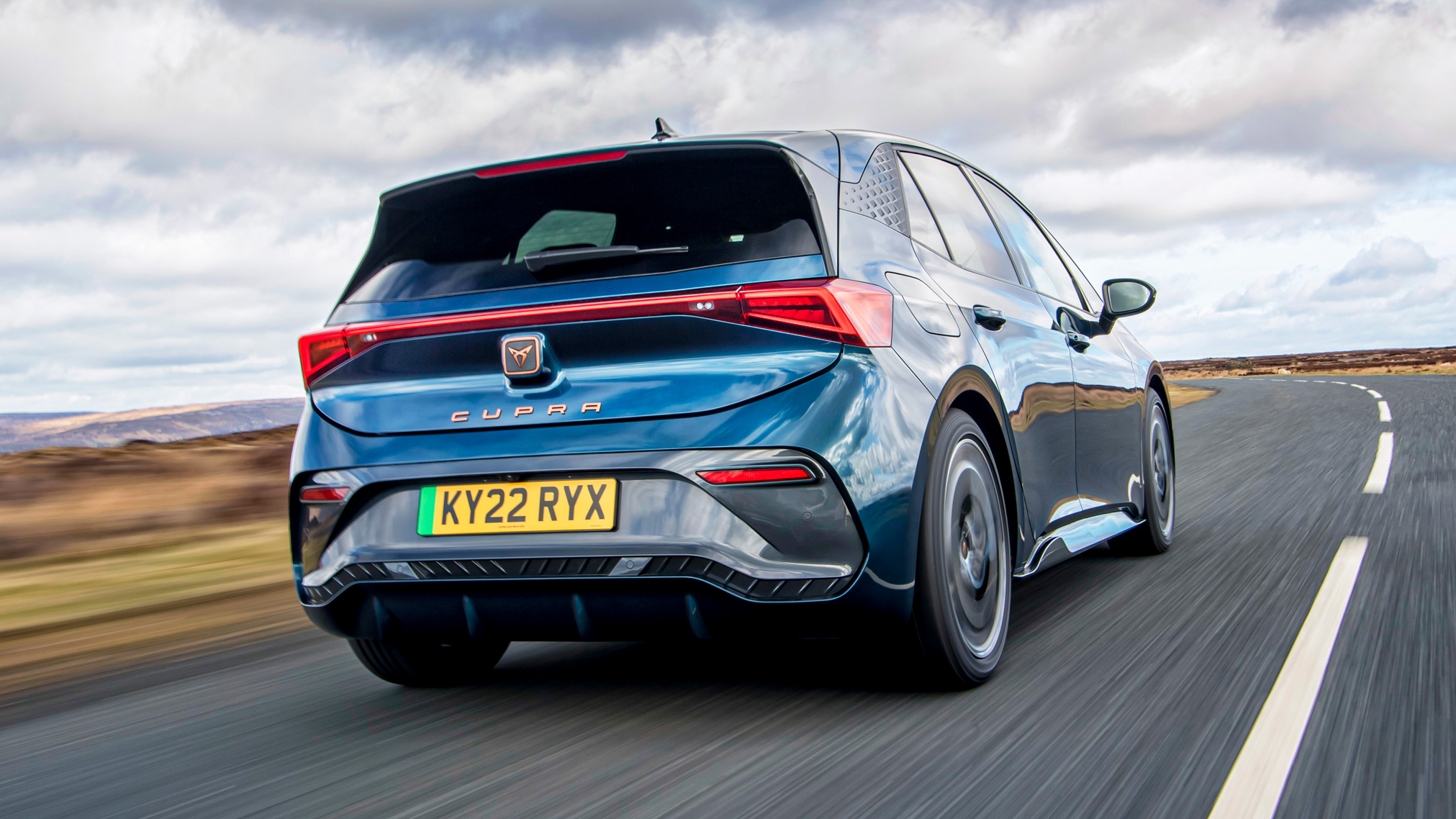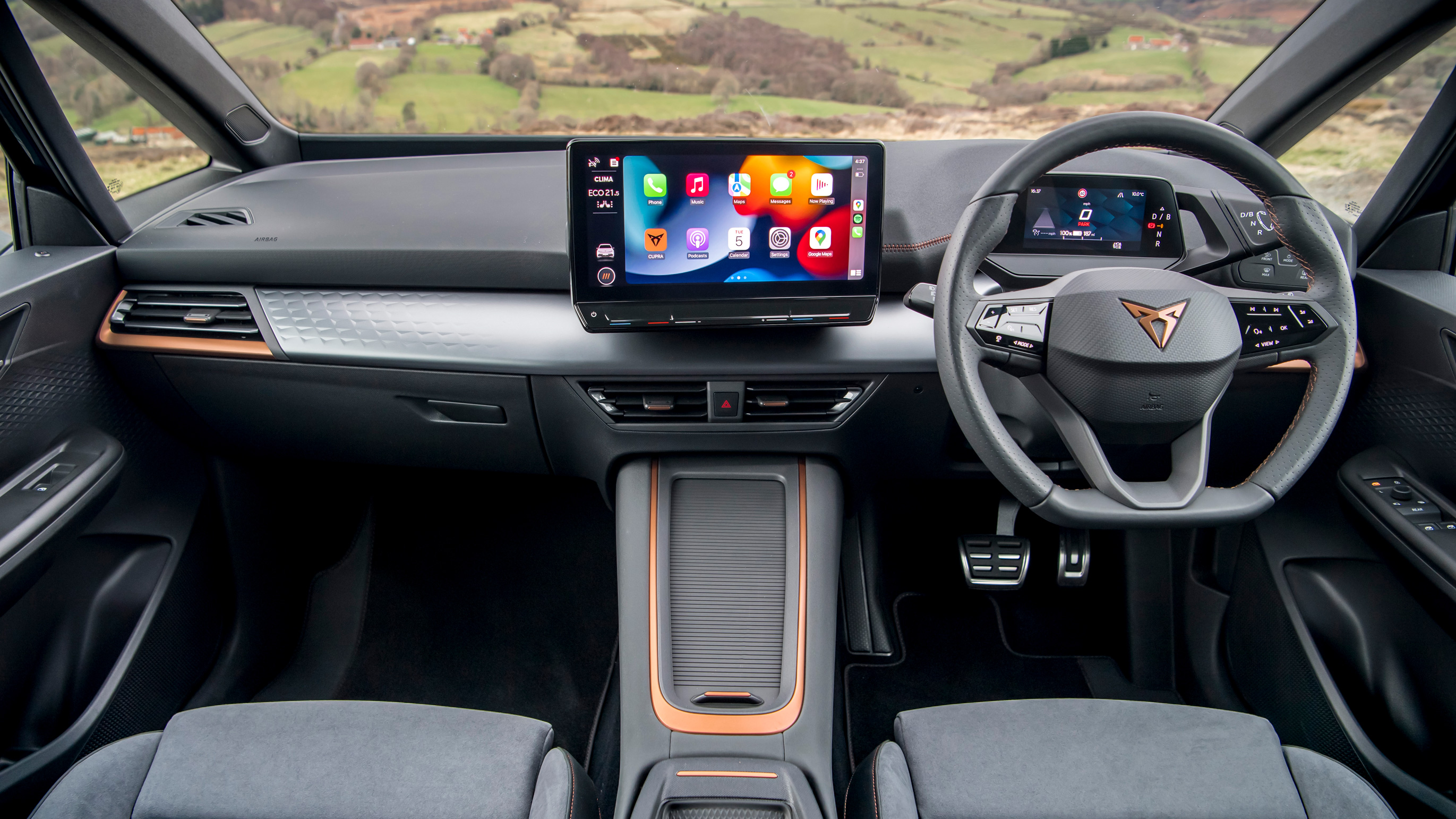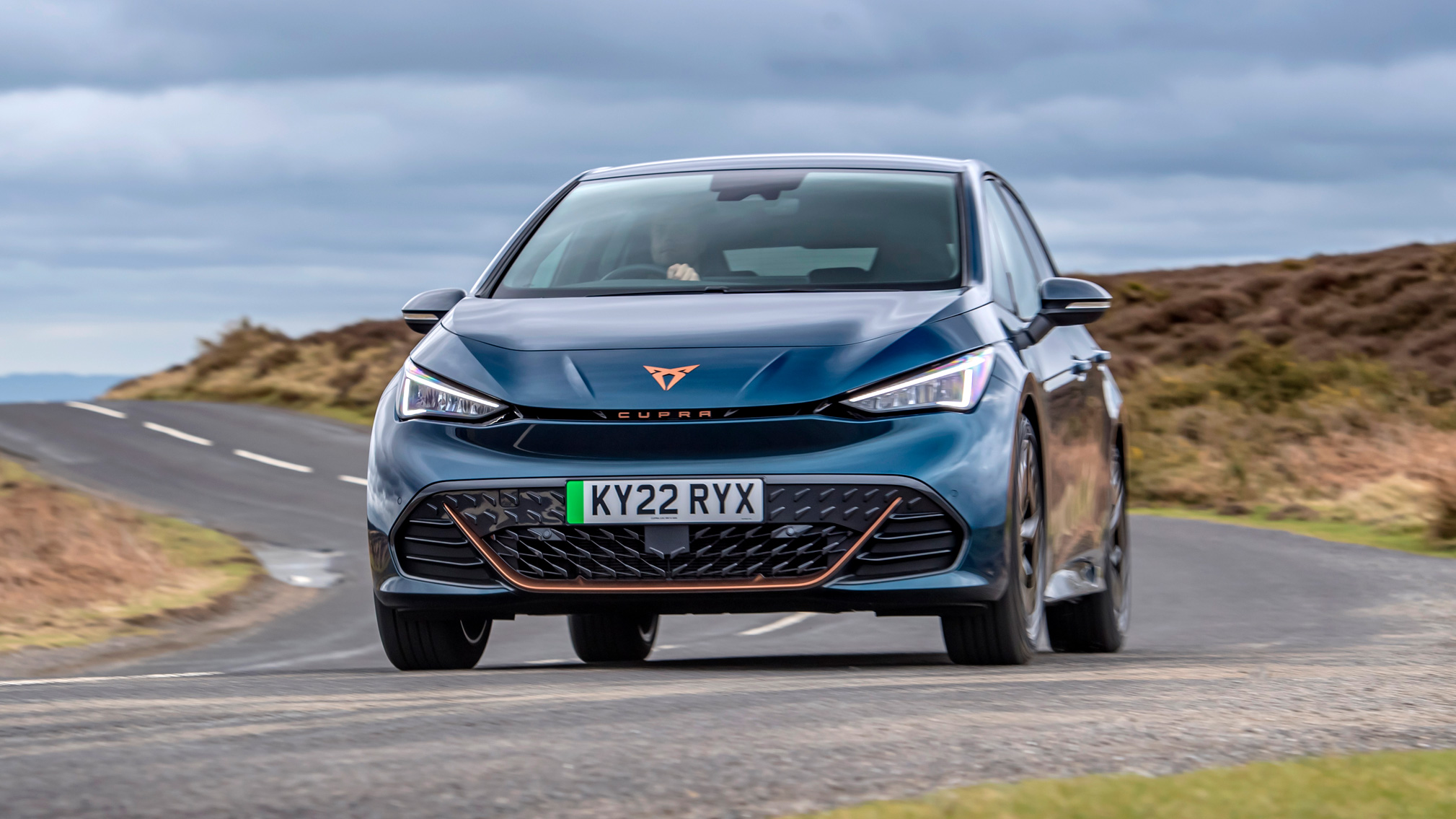
Interior
What is it like on the inside?
Here’s perhaps the biggest difference between the Cupra and its Volkswagen twin. The two cabins look remarkably similar, and while the Cupra does get the same minimalist, button-free layout (argh!) it does diverge in a few small ways and it's clothed in materials that feel much more upmarket. There are more soft-touch surfaces than scratchy plastics and the funky little 3D patterns are everywhere you look. And copper. Lots of copper.
Sadly the touch sensitive ‘buttons’ on the steering wheel are just as annoying as in the Volkswagen, and you’ll clip them almost every time you turn a corner. But the seats are absolutely excellent, with base versions made from upcycled marine plastics.
Meanwhile the optional heated, massaging units use a fabric called Dinamica. That's made from old T-shirts and plastic bottles, but it feels a little like suede. It's very nice and probably worth the £195 upgrade as a talking point alone.
Tell me about screens.
The central screen measures 12 inches across no matter what spec you go for, and while early versions we tried had a tendency to glitch, we've had no such issues in more recent models. The touchscreen seems more responsive these days too, and the graphics are pin sharp. Cupra has applied its own take to the menus as well; all told, it's an improvement over VW's own take.
Behind the steering wheel there's a 5.3in digital screen that'll show you speed, range, trip info and not much else. Good. Who wants information overload? On the steering wheel you'll find a button to cycle through all of the drive modes.
How’s the practicality?
It’s tall inside so there's plenty of headroom, but that also means it feels more like an MPV than a hunkered down hot hatch. At least the abundance of glass gives the Born an airy feel. Rear seat passengers sit higher but there’s enough legroom back there, and the boot can swallow 385 litres of stuff.
Featured

Trending this week
- Car Review
BMW iX3






